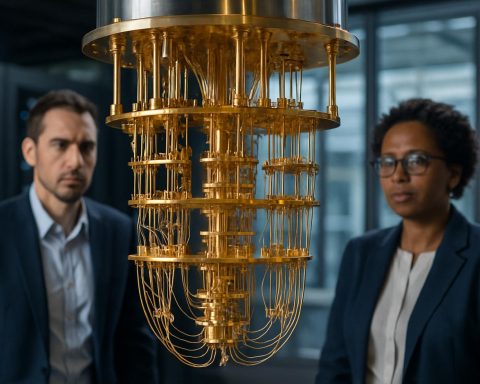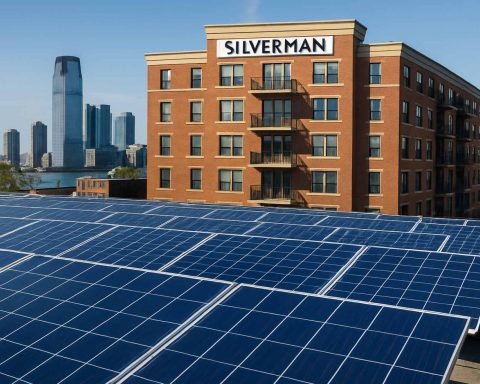- Australia faces a critical shortage of skilled electric vehicle (EV) repair technicians as EV adoption outpaces training efforts.
- Fewer than 10% of NSW mechanics are formally trained to work on EVs, causing long repair waits and many lightly damaged EVs to be written off.
- New safety regulations may require all mechanics working on high-voltage EVs to obtain certification, potentially worsening repair workforce shortages.
- Improper handling of EV batteries poses significant safety risks, making specialized training essential for mechanics.
- Automotive industry and government collaboration is vital to deliver practical, scalable EV technician training and maintain momentum in Australia’s clean transport transition.
Under the sharp sun of a rural scrapyard, a nearly untouched electric vehicle lies hidden beneath a coarse tarp. Its metallic curves, interrupted only by a scuffed rear end, offer a strange juxtaposition: a vision of tomorrow consigned to the dust, its journey cut short after barely 300 kilometers.
This BYD Atto 3, written off despite minor damage, has become a silent testament to a sweeping challenge electrifying Australia’s future on wheels. As electric vehicles (EVs) gain ground, a surprising adversary rises—not range anxiety, nor battery longevity, but the stark shortage of skilled mechanics able to repair them.
Australia’s EV Dilemma: Scarce Skills, Soaring Demand
Walk into any reputable repair shop in Sydney or Melbourne and you’ll feel the undercurrent of change. Where the tidy hum of petrol engines once echoed, now a few EVs await specialist attention—a wait that can stretch into weeks. Industry experts estimate that less than 10% of NSW technicians have formal EV training. Yet, the government targets more than half of all new vehicles sold to be electric or hybrid by the decade’s end.
This persistent skills gap places immense pressure on early EV adopters, as insurers often deem even slightly damaged vehicles too risky or costly to fix. Many like the Atto 3 are labeled ‘written-off’ for issues a traditional car would easily survive. Some inventive owners repurpose these vehicles, salvaging batteries or converting them into stationary energy storage, but most find their fate locked between forgotten machinery in dusty lots.
Regulatory Crossroads: Training or Roadblock?
The New South Wales government has proposed mandatory certification for all mechanics handling high-voltage cars, a move meant to bolster safety given the deadly voltage lurking in EV batteries. While the intent is clear—protect workers and drivers alike—the proposed law could shrink the already limited repair workforce overnight. Industry leaders warn that this necessary caution could inadvertently make repairs even slower and more expensive for the average driver.
Training is not a mere formality. Mishandling the high-energy batteries can lead to injuries, fires, and even fatalities. However, legislation that does not distinguish between simple tyre changes and intricate electrical work may stifle the expansion of much-needed repair services.
Driving Toward Solutions
Despite these hurdles, Australia’s EV repair infrastructure is slowly strengthening. Established manufacturers continue to upskill their technicians, while advancements in EV design promise modular components that may be easier and safer to replace over time.
For those considering their next car, due diligence is crucial. Understanding whether local repairers are trained for EVs can mean the difference between a timely fix and a lengthy, expensive ordeal. And as the landscape shifts, pressure mounts for both government and industry to roll out streamlined, practical certification that balances safety with accessibility.
Key Takeaway
Australia’s rapid electrification of its roads has spotlighted a crucial bottleneck—preparing a workforce ready to keep new vehicles moving safely. Without a thoughtful strategy to match rising demand with practical repair expertise, even the cleanest vehicles might see more scrapyards than highways.
The solution demands skilled hands, sensible regulation, and collaboration—an electrifying challenge that will define the next chapter of Australia’s automotive story.
For more insights on electric vehicles and cutting-edge technology, visit Google or stay updated with the latest developments in automotive innovation at BYD.
Why Australia’s Electric Cars Are Stalled: The Hidden Crisis No One Saw Coming
Australia’s Electric Vehicle Repair Crisis: Unpacking the Full Story
—
Australia’s accelerated push towards electric vehicles (EVs) promises a cleaner, greener future—but a deeper look reveals systemic cracks holding back progress. Beneath the surface lies a critical issue: the shortage of skilled mechanics—meaning even minor EV damage can relegate these high-tech vehicles to scrapyards, creating a silent crisis in Australia’s automotive evolution.
Below, we expand on underexplored facts, trends, actionable steps, and key questions every consumer and professional should consider about the growing EV repair dilemma.
—
Additional Core Facts & Industry Data
- Global Perspective: Australia is not alone—according to the International Energy Agency (IEA), the skills shortage facing EV repairs is a global issue, with countries like the USA and UK reporting similar bottlenecks (IEA).
- EV Battery Handling: EV batteries operate at voltages often exceeding 400V, posing serious risks to untrained personnel. The unique risks require advanced tools and safety equipment not typically found in standard workshops.
- Tech-Driven Upgrades: Modern EVs, such as the BYD Atto 3, are software-intensive. Regular over-the-air (OTA) updates can resolve some issues remotely, but significant repairs still require hands-on expertise.
- Insurance Premiums & Write-Off Rates: Insurers are hiking premiums on EVs and writing off vehicles for minor damages at a higher rate compared to ICE (internal combustion engine) cars. This is tied directly to both the shortage of qualified repairers and the high cost of replacement components (according to BYD and Australian insurers).
- Salvage and Repurposing: Written-off EVs, while unusable on the road, are increasingly dismantled for battery packs used in home energy storage or renewable power grid buffers, giving them a second life on the clean energy market.
—
How-To Steps: What EV Owners Should Do Now
1. Research Local Service Options: Before buying an EV, verify the presence of certified EV repair shops in your city.
2. Check Mechanic Credentials: Ask for proof of high-voltage training (EV Certificate II or higher in Australia).
3. Understand Your Insurance: Clarify what types of damage are covered and how minor incidents may impact your premium or result in write-offs.
4. Stay Up-To-Date with Firmware: Ensure your vehicle receives the latest software updates, as some problems can be diagnosed or resolved remotely.
5. Learn Emergency Basics: Know the steps for safe disengagement or evacuation in case of EV battery fire or malfunction.
—
Market Forecasts & Industry Trends
- According to Statista, Australian EV sales are projected to surpass 100,000 annually by 2027, with market penetration rates over 20%.
- Automotive training institutions are racing to include government-endorsed EV modules by 2025, while dealerships announce in-house training academies.
- Repair solutions like modular battery packs and less-integrated component designs are expected to reduce repair times and costs over the next 3-5 years.
—
Pressing Consumer Questions Answered
- Q: Is it safe to have minor work (like tyre or brake replacement) performed at any mechanic?
A: Generally, tyre and brake work can be handled by mechanics without high-voltage certification—unless EV-specific systems or sensors are involved. Always confirm with your technician. - Q: Are all EV repairs expensive?
A: Not always. Routine maintenance is often cheaper than ICE vehicles, but body and battery repairs are more costly due to limited expertise and expensive parts. - Q: How can I find a qualified EV repairer?
A: Start by checking your vehicle manufacturer’s website (such as BYD) for approved repair partners, or consult the Australian Automotive Aftermarket Association for a list of certified workshops.
—
Security, Safety & Sustainability
- Improper repairs pose serious fire risks—EV fires can take hours to extinguish due to “thermal runaway” events in the battery cell.
- Properly handled, EVs are safer for the environment, but mishandled batteries in landfills present toxic waste hazards.
- Recycling protocols for lithium batteries are improving, with companies like Tesla, Redwood Materials, and BYD leading closed-loop initiatives.
—
Pros & Cons Overview
| Pros | Cons |
|---|---|
—
Controversies & Limitations
- Mandatory blanket certification may unintentionally create more bottlenecks by limiting who can work on EVs—even for simple jobs. Experts like Garth Evans (Automotive Training Board) call for tiered certifications to match task complexity.
- Insurance write-off criteria for EVs are under review—critics argue that “total loss” definitions are outdated for modern, modular vehicles.
—
Actionable Recommendations & Quick Tips
- Always ask your repair shop about EV-specific expertise before booking service.
- If buying used, check service history for qualified maintenance—not just routine checks.
- Advocate for clear, tiered government training frameworks to expand the qualified workforce while maintaining safety standards.
- Join EV owner forums for peer-reviewed experiences and recommendations on local repairers.
—
Australia’s EV revolution is at a crossroads—bridging the repair skills gap is the key to ensuring these vehicles deliver on their promise of clean, reliable, and sustainable transport for all.
For further industry analysis and the latest EV updates, visit BYD or follow global trends at IEA.










